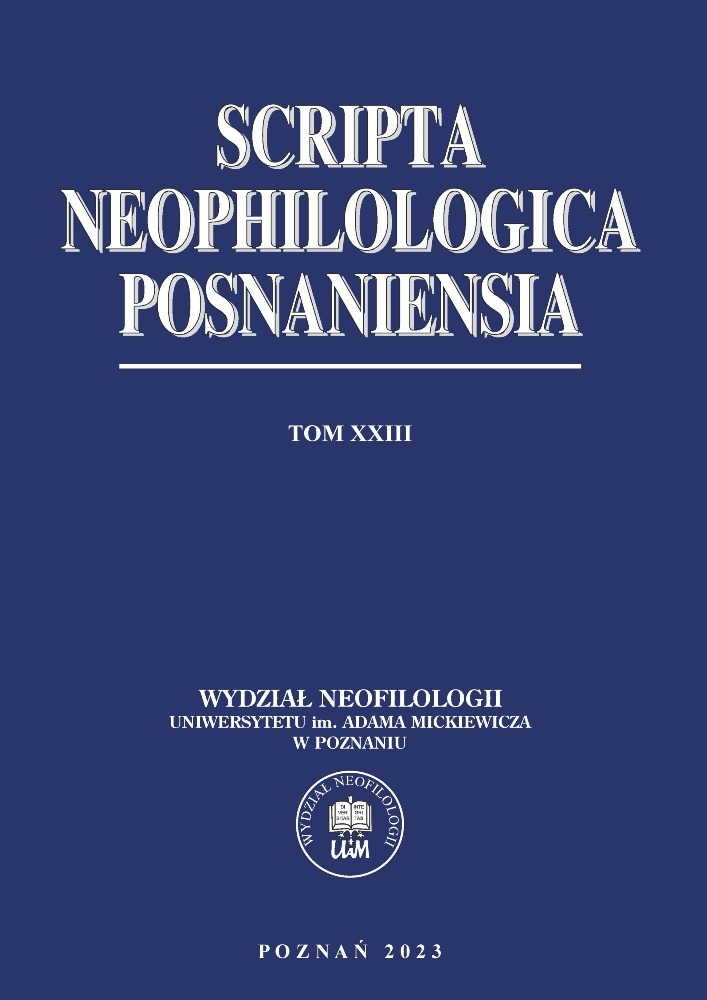Abstract
The imperative mood has not been a protagonist of too many linguistic investigations, while its significance in everyday communication is unquestionable. It is argued here that the imperative mood has two extensions, the natural biological manifestation: the ‘biological imperative mood’, and the linguistic extension: the ‘linguistic imperative mood’. Both extensions collaborate jointly in the expression of the ‘Human Behavioural Gematon’. The latter is responsible for the entirety of the following operations: sensing, acting, doing, performing, expressing, communicating, and enduring, all within the confines of the ‘human condition’ (conditio humana). The argumentation contained therein concentrates on the transition form the biological cell (nature, biology) to culture as the final result of the synergic co-existence of the two extensions of the imperative mood in the human world.
References
Aikhenvald, A.Y. (2010). Imperatives and commands. Oxford: Oxford University Press.
Bejan, A. (2000). Shape and structure, from engineering to nature. Cambridge: Cambridge University Press.
Bejan, A. i J.P. Zane. (2012). Design in nature: how the constructal law governs evolution in biology, physics, technology and social organization. New York: Doubleday. DOI: https://doi.org/10.1063/1.4798429
Blaustein, M.P., J.P.Y. Kao i D.R. Matteson. (2004/2012). Cellular physiology and neurophysiology. Philadelphia, PA: Elsevier.
Campbell biology. (2008/2016). London: Pearson.
Campbell, G.L. i G. King. (1995/2011). The concise compendium of the world’s languages. London/New York: Routledge. DOI: https://doi.org/10.4324/9780203159064
Davies, E. (1986). The English imperative. Beckenham: Croom Helm.
Dryer, M.S. i M. Haspelmath. (red.). (2011). The world atlas of language structures online. München: Max Planck Digital Library.
Fantin, J.D. (2010). The Greek imperative mood in the New Testament: a cognitive and communicative approach. Frankfurt am Main: Peter Lang. DOI: https://doi.org/10.3726/978-1-4539-0049-9
Hőlldobler, B. i E.O. Wilson. (2009). The superorganism: the beauty, elegance, and strangeness of insect societies. New York: W.W. Norton.
Keener, J. i J. Sneyd. (2009). „Cellular homeostasis”. W: Keener, J. i J. Sneyd. (red.). Mathematical physiology. Interdisciplinary Applied Mathematics 8.1. 49-119. Berlin/New York: Springer Verlag. DOI: https://doi.org/10.1007/978-0-387-75847-3_2
Konieczny, L., I. Rotermani i P. Spólnik. (2017). Biologia systemów. Strategia działania organizmu żywego. Warszawa: Wydawnictwo Naukowe PWN.
Xrakovski, V.S. (red.). (2001). Typology of imperative constructions. München: Lincom Europa.
Lackie, J.M. (red.). (2007). The dictionary of cell and molecular biology. San Diego: Academic Press.
Nuyts, J. i J. Van der Auwera. (red.). (2016). The Oxford handbook of modality and mood. Oxford: Oxford University Press. DOI: https://doi.org/10.1093/oxfordhb/9780199591435.013.4
O’Connor, C.M. i J.U. Adams. (2010). Essentials of cell biology. Cambridge, Mass.: NPG Education.
Palmer, R.L. (2001). Mood and modality. Cambridge: Cambridge University Press. DOI: https://doi.org/10.1017/CBO9781139167178
Puppel, J. (2022). „Gestural minds unfolding: on becoming fully equipped and fully licensed gestural signers”. Scripta Neophilologica Posnaniensia XXII, 153-156. DOI: https://doi.org/10.14746/snp2022.22.08
Puppel, S. (2022). „O zjawisku uścisku imperatywnego i życiu człowieka w dwóch ‚domach’ i dwóch podwójnych helisach w kontekście ‚języka panstwowego’”. Scripta Neophilologica Posnaniensia XXII, 157-168. DOI: https://doi.org/10.14746/snp2022.22.09
Ruyer, R. (2018). „The philosophy of morphogenesis”. Parrhesia 29, 1-25. Sperelakis, N. (red.). (2012). Cell physiology sourcebook. San Diego: Academic Press.
Thompson D’Arcy. (1917). On growth and form. Cambridge: Cambridge University Press. Turing, A.M. (1952). „The chemical basis of morphogenesis”. Philosophical Transactions of the Royal Society of London Series B 237, 37-72. DOI: https://doi.org/10.1098/rstb.1952.0012
Wilson, E.O. (2012). The social conquest of the earth. New York: W.W. Norton.
Zhang, Shi. (1990). The status of imperatives in theories of grammar. Unpublished doctoral dissertation. Tucson: The University of Arizona.
License
Copyright (c) 2023 Stanisław Puppel

This work is licensed under a Creative Commons Attribution-NoDerivatives 4.0 International License.

